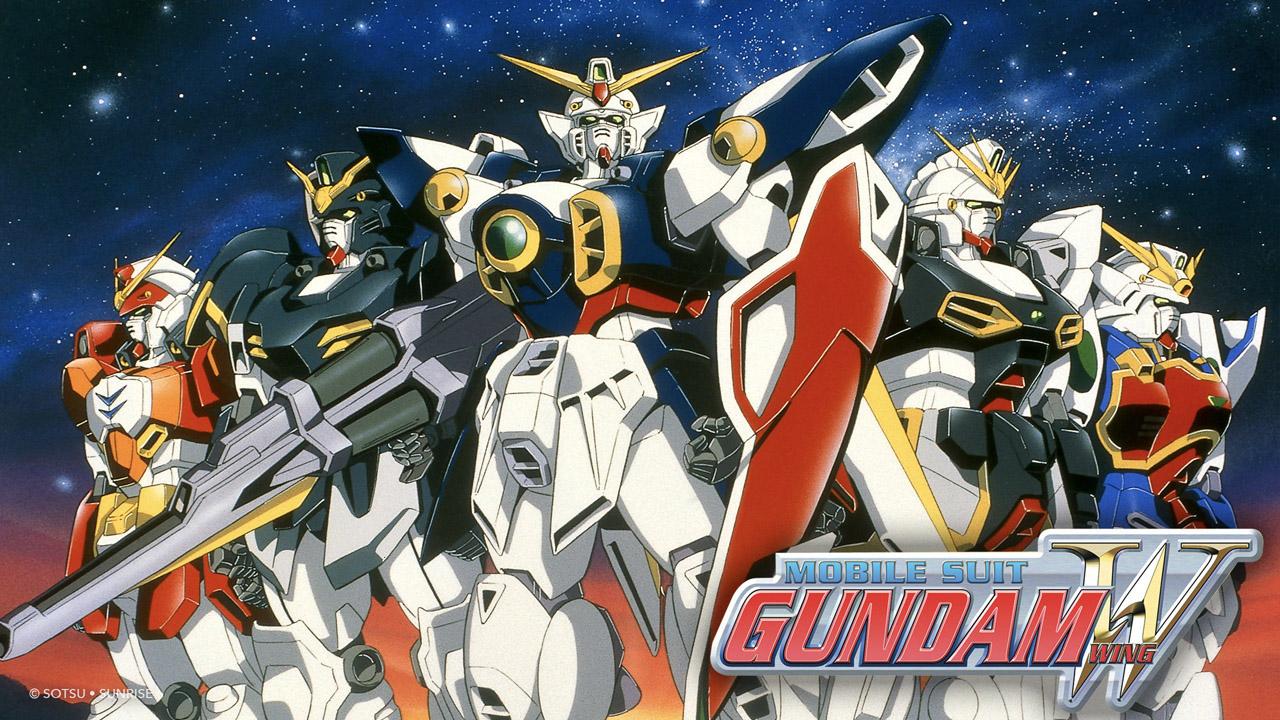The Mobile Suit Gundam franchise has been one of the biggest properties to come out of Japan over the years. Beginning as an anime franchise in 1979, it became a cultural phenomenon that would eventually spread to other countries as well.
The original Mobile Suit Gundam anime was set in a future in which space colonies had been established away from the Earth. It followed a group of military personnel and civilians in battle against a renegade space colony that that had declared itself the Principality of Zeon. For roughly the first 15 years of Gundam media, all series were set in a “Universal Century” timeline that stemmed from the original series. However, later on, the crew began to realize this was far too limiting, and began setting series in “alternate” timelines that were independent of the one created by the original series. The first of these was Mobile Fighter G Gundam, but the second, Mobile Suit Gundam Wing (hereafter simply referred to as “Gundam Wing”) is the Gundam series best remembered by American audiences.
Gundam Wing was originally created and aired in Japan in 1995, and was dubbed into English and aired in America in 2000, as a part of the Cartoon Network Toonami block. It was not the first Gundam series dubbed into English (there had been English dubs for home video releases of a handful of other media), but it was the first Gundam series to air on television in the United States. The show aired on weekday afternoons in an edited format, with an uncut version airing at midnight each night. The success and ratings of Gundam Wing on Cartoon Network prompted the eventual airing of an English dubbed version of the original 1979 Mobile Suit Gundam.
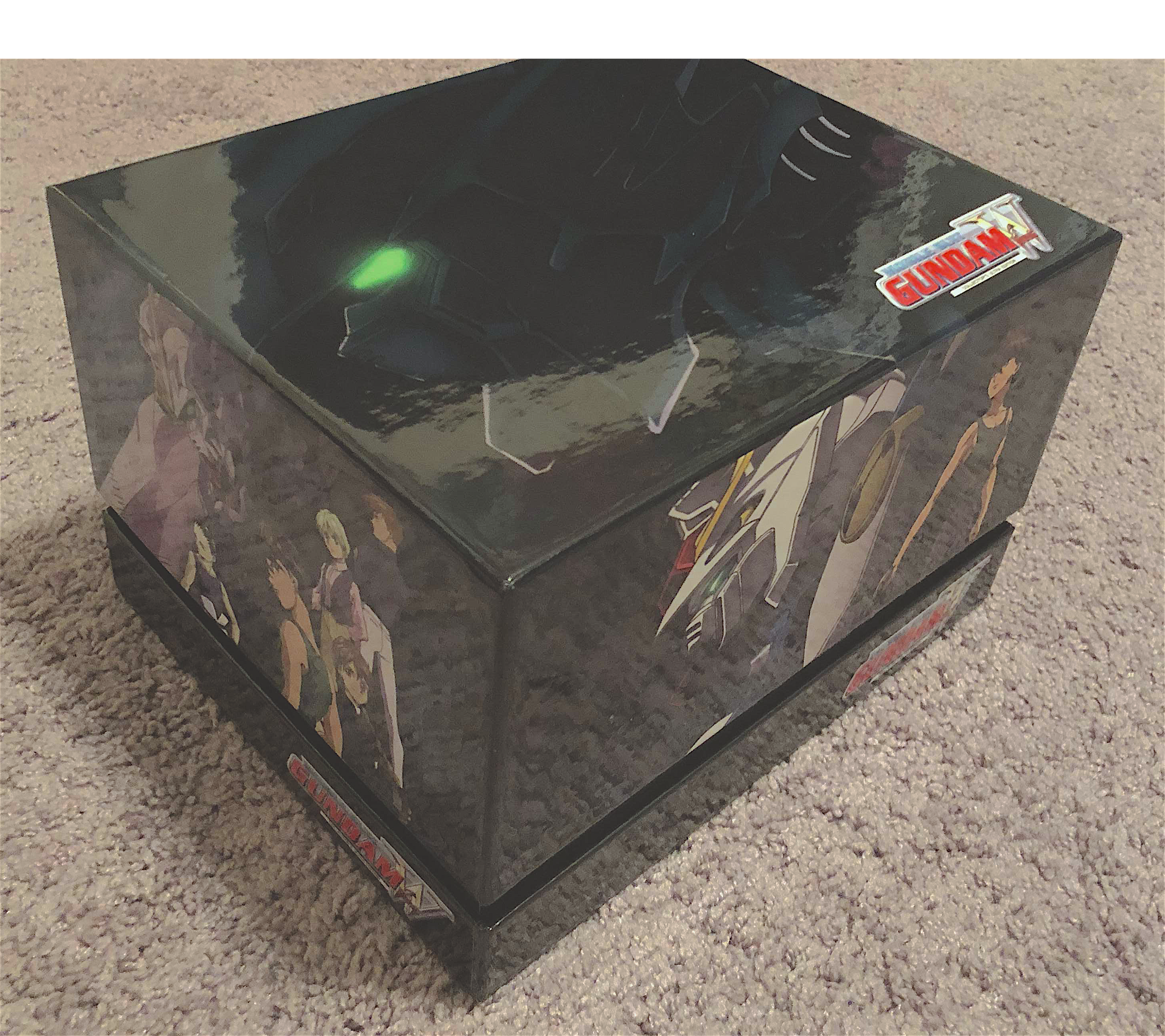
Gundam Wing has received a handful of home releases over the years, including VHS tapes and DVDs, and most recently, Blu-ray Discs. RightStuf is selling three sold-separately packages: Collection 1, featuring the first 25 episodes of the anime, Collection 2, featuring the remaining 24 episodes (the series consists of 49 episodes total), and a set featuring Endless Waltz, a follow-up to the television series, and Operation Meteor, a four-episode retelling of the series’ events from the pilots’ perspectives, with a small amount of new animation depicting the aftermath of the series. This box set combines these three sets, and includes a bonus disc exclusive to this package, along with several other exclusive extras, including posters, art cards, a pin set, a tarot card set, and a hardbound art book.
If you are reading this review, you probably fall into one of two categories: You either have never seen the series before and are curious, or you are a die-hard fan, past or present, who has purchased the show before, or has fond memories of it from Cartoon Network, and now find yourself curious about this box set. If you fall into the former category, the next few paragraphs will cover the series itself (which I will keep as spoiler free as possible). If you are in the latter category, you may want to skip down to my comments on the technical presentation and the box itself.
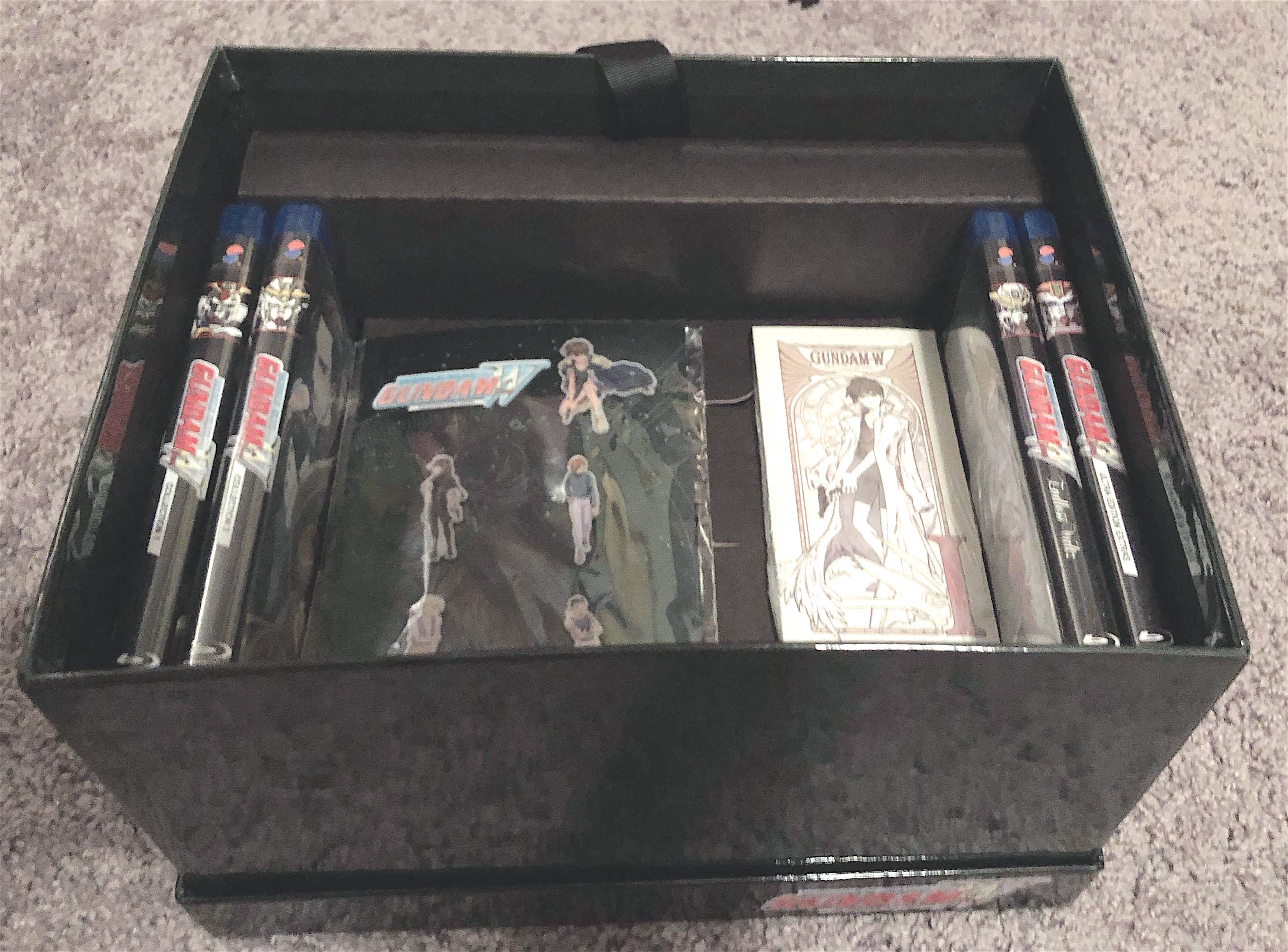
Gundam Wing is set in the After Colony timeline, in year 195. By this time, mankind still lives on the Earth, but many people have moved to colonies in outer space. Attempts to achieve peace have been made over the years, but conflicts still range on. The planet’s governing body, the United Earth Sphere Alliance, has received mobile suit weaponry for Operation Zodiac, or OZ for short, a powerful organization backed by wealthy aristocrats, and fronted by charismatic, revered soldier Treize Khushrenada. OZ’s soldiers include Khushrenada’s close follower and admirer, Lady Une, the masked Zechs Merquise, a powerful soldier with a tragic backstory he has locked away, and Zechs’ old acquaintance and admirer, Lucrezia Noin. However, the OZ organization has their own plans for the future, including a coup to overthrow the United Earth Sphere Alliance, and take control both on Earth and in space.
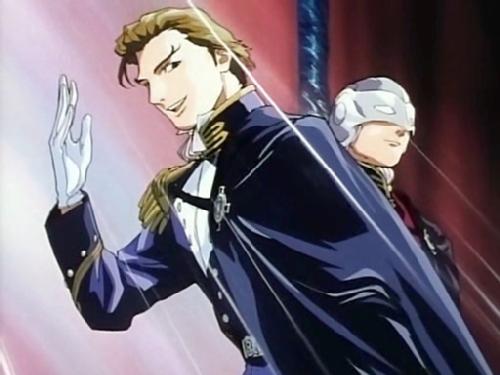
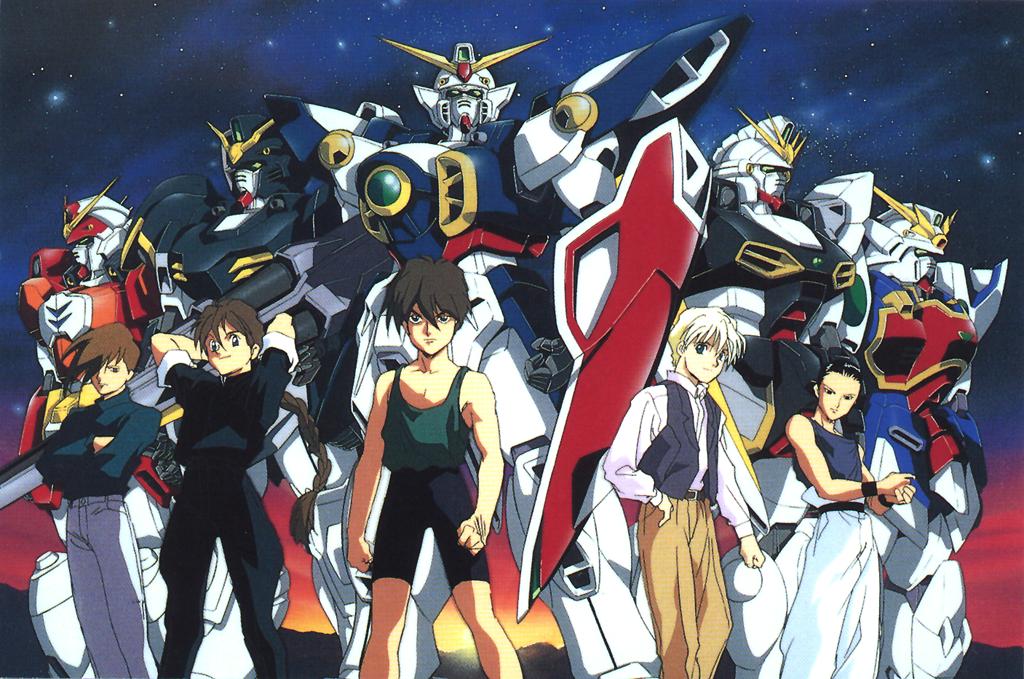
From Space, a secret plan known as Operation Meteor is launched. Five young men from the colonies are sent to Earth, each piloting a Gundam suit to do battle with the forces of OZ, and stop their plot. The Gundam pilots in the Gundam Wing series are as follows:
-Heero Yuy, a determined soldier who has taken the name of a man who once crusaded for pacifism and peace in space and on Earth. Heero is of Japanese descent, and pilots the Wing Gundam.
-Duo Maxwell, a friendly and happy young man in casual, social situations, but who rises to the occasion in battle, even declaring himself the God of Death. Duo is of American descent, and pilots the Deathscythe Gundam.
-Trowa Barton, a mostly silent boy who goes undercover on Earth, in the guise of a circus performer. His ancestry and backstory are largely a mystery, and he pilots the Heavyarms Gundam.
-Quatre Raberba Winner, a young man that would rather find a peaceful solution as opposed to battle, but is not afraid to lay down the law with force when necessary. Of Arabian descent, he pilots the Sandrock Gundam.
-Wufei Chang, a powerful martial artist and fighter, both in and out of his Gundam, who does whatever it takes to achieve victory. Of Chinese descent, he pilots the Shenlong Gundam.
The other key character in the series is Relena Darlian, the daughter of a Vice Foreign Minister that has come under the ire of the OZ organization. She encounters Heero early on, and becomes infatuated with him and his mysterious nature.
Other characters in the series include the scientists who created the Gundams, early Mobile Suit designer Howard, the Maganac Troops, a squadron of desert-based Mobile Suit troops loyal to Quatre, and Sally Po, an Alliance major that becomes curious about Heero and the impending battle, and quickly finds herself in an unexpected role with new friends and foes. Many other characters and organizations appear throughout the series, but I am mostly restricting this list to those that appear early on, as I want to avoid spoilers for those that have not seen or experienced the series yet.
The greatest strength of the Gundam franchise (not just Gundam Wing) is that it beautifully illustrates the horrors and losses that comes with battles and wars, yet is able to do so in an intriguing science fiction environment with well-designed Mobile Suits and three-dimensional characters. Gundam Wing is not necessarily the best Gundam series, but it was the first one to air on American television, and as a result, remains the one that is most remembered and known by United States audiences. Revisiting the series nearly two decades after it first hit Cartoon Network’s Toonami block (damn, I feel old now!), I am happy to report that it holds up well after all this time, despite its flaws. Gundam Wing has been called something of a remake of the original Mobile Suit Gundam; there are definitely similarities between the two. In particular, Zechs Merquise is essentially an updated version of the original series’ Char Aznable.
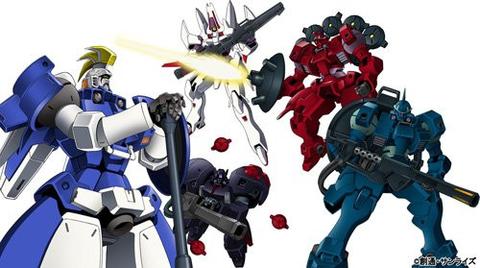
In its 49-episode duration, Gundam Wing introduces a large number of characters, and does a fantastic job fleshing out nearly all of them. When the series first starts out, it seems fairly black and white, but it quickly becomes apparent that the show is not as simple as “Gundams are the good guys and OZ are the bad guys.” Many factions appear, and characters who start out heroic or villainous may end up in places and situations that you may not expect. Characters die and face personal tragedies; the horrors of war are certainly not spared from the characters. Yet despite it all, the show does still manage to work in the occasional trace of comic relief, and thankfully, these moments do not feel forced.
Compare the first episode of the series to the last, and you will be amazed with how far the characters and the in-universe technology advice over the course of time. Due to the series’ length and approach, even secondary and tertiary characters get fleshed out and established. Interestingly, the Gundam pilots do NOT always fight as a team, so they often get their own separate plotlines. At times, you will spend a few episodes following one pilot or group of pilots, and the next few episodes following another. Many episodes even focus on the inner conflict within the OZ organization, making it a show in which even the villains are well fleshed out, and in some cases, may even seem sympathetic.
Gundam Wing is a solid, excellent series, though not a perfect one. Many action-oriented animated series are one-dimensional and do not really go anywhere. Gundam Wing has the opposite problem; the series has too MUCH plot and too many characters/plotlines. It will not be long before the viewer is bogged down in all the various factions and the personae that represent them. I admire the series’ wide scope and story-heavy approach, but there are times where it is simply too much to take in and process. Fortunately, this does not work against the series too heavily; it is still enjoyable overall.
The series is followed by the Operation Meteor OVA, a four-episode flashback of the series from the pilots’ points of view, along with some brief extra scenes talking about the stories of the other characters throughout the series. There is a little bit of newly added content here, framing the episodes, as well as new narration, though this OVA is largely forgettable, unless you want a recap of sorts before watching Endless Waltz.
Following Operation Meteor is Endless Waltz, the “official” follow-up to the series. It was originally put out as a three-episode direct-to-video release in Japan, though was later re-edited into a 90-minute film that added in some new footage. I will not spoil any plot details of Endless Waltz here, as it is a direct follow-up to the conclusion of the series, but it does a solid job continuing the story and is definitely essential viewing for any fan. Of the two versions, the OVA and the combined film, the latter is the superior release, although the OVA version does feature a few “closing credits” scenes the re-edited film lacks, so you will probably want to watch both versions once.
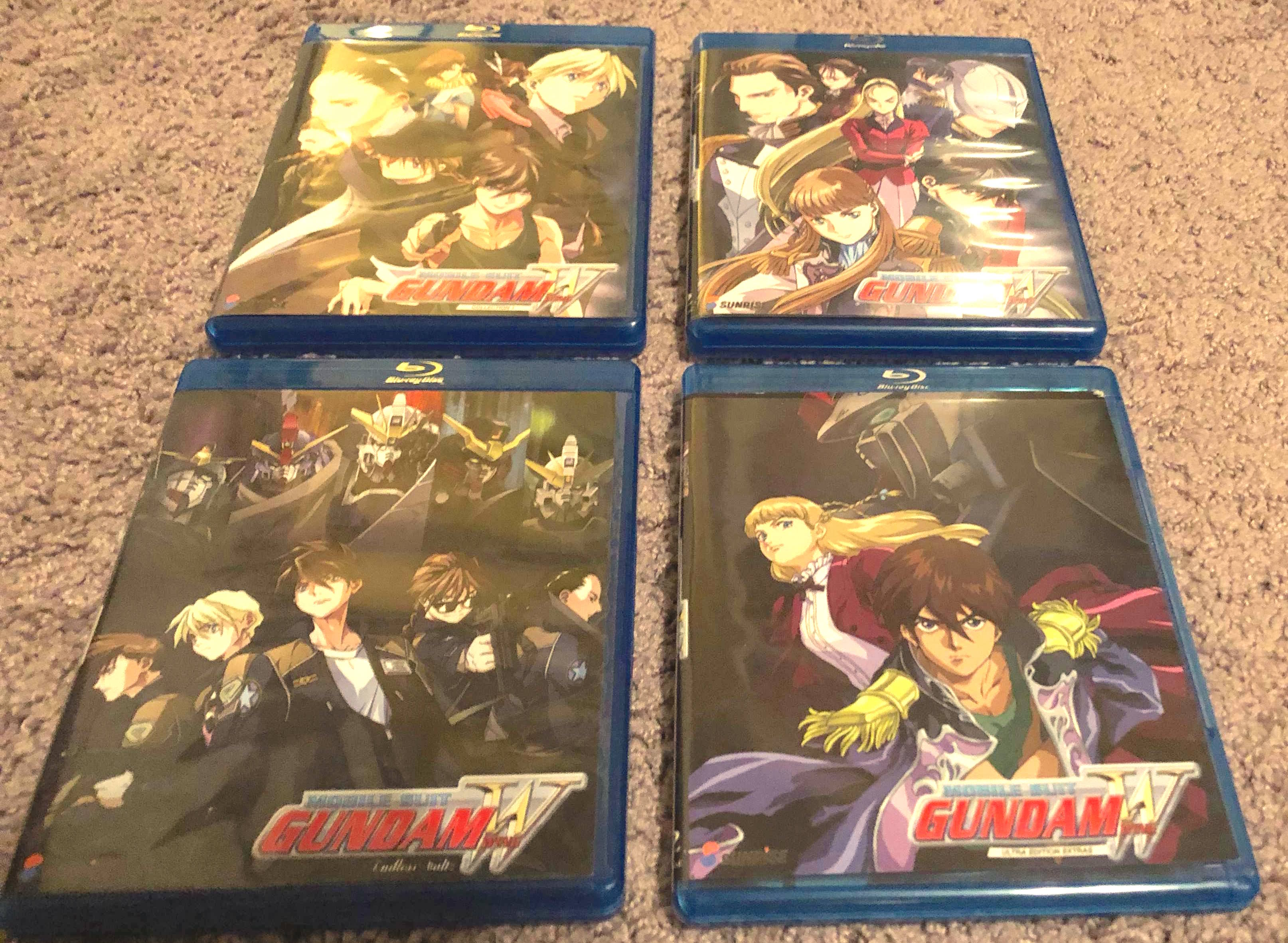
If you are purchasing the series on Blu-ray Disc, your primary concern is probably how the series looks. Is it an upgrade from older DVD releases? I am happy to say that, despite a few minor flaws, this set looks great, and is in all ways a step up from the ugly, artifact-riddled DVDs of the past. The beautiful, hand-drawn animation is given new life in high definition. Colors are far more vibrant than the DVDs, and the series retains a layer of film grain for an authentic filmic appearance. The image, thankfully, has not been overly processed, or cropped to fit a widescreen television, remaining in the original 1.33:1 aspect ratio. There are obvious limitations, with a few murky moments, and dirt in the frames (most noticeable when a stationary object is being moved across the screen, or in scenes with explosions of the light of the engines of Gundams or other vehicles). Endless Waltz looks even better than the main series, though it does still retain a handful of the same image anomalies. Overall, Gundam Wing looks great on Blu-ray Disc.
The audio is available in the English language dubbed version from Cartoon Network’s Toonami in 2000, or the original Japanese audio track, subtitled in English. I naturally prefer the original Japanese version, although the English dub, featuring the Ocean Group, is solid as well, despite the script being a little too wooden and the translation too literal in places. Both tracks sound very good overall, although don’t expect the sonic treatment you would get from the latest Hollywood blockbuster on Blu-ray. Note that the Operation Meteor OVA, however, is only in Japanese with English subtitles, and does not have an English audio track.
The individual sets include textless intro and outro sequences as bonus features, as well as some vintage Japanese commercials for the series. Disappointingly though, none of the American Toonami promos are included.
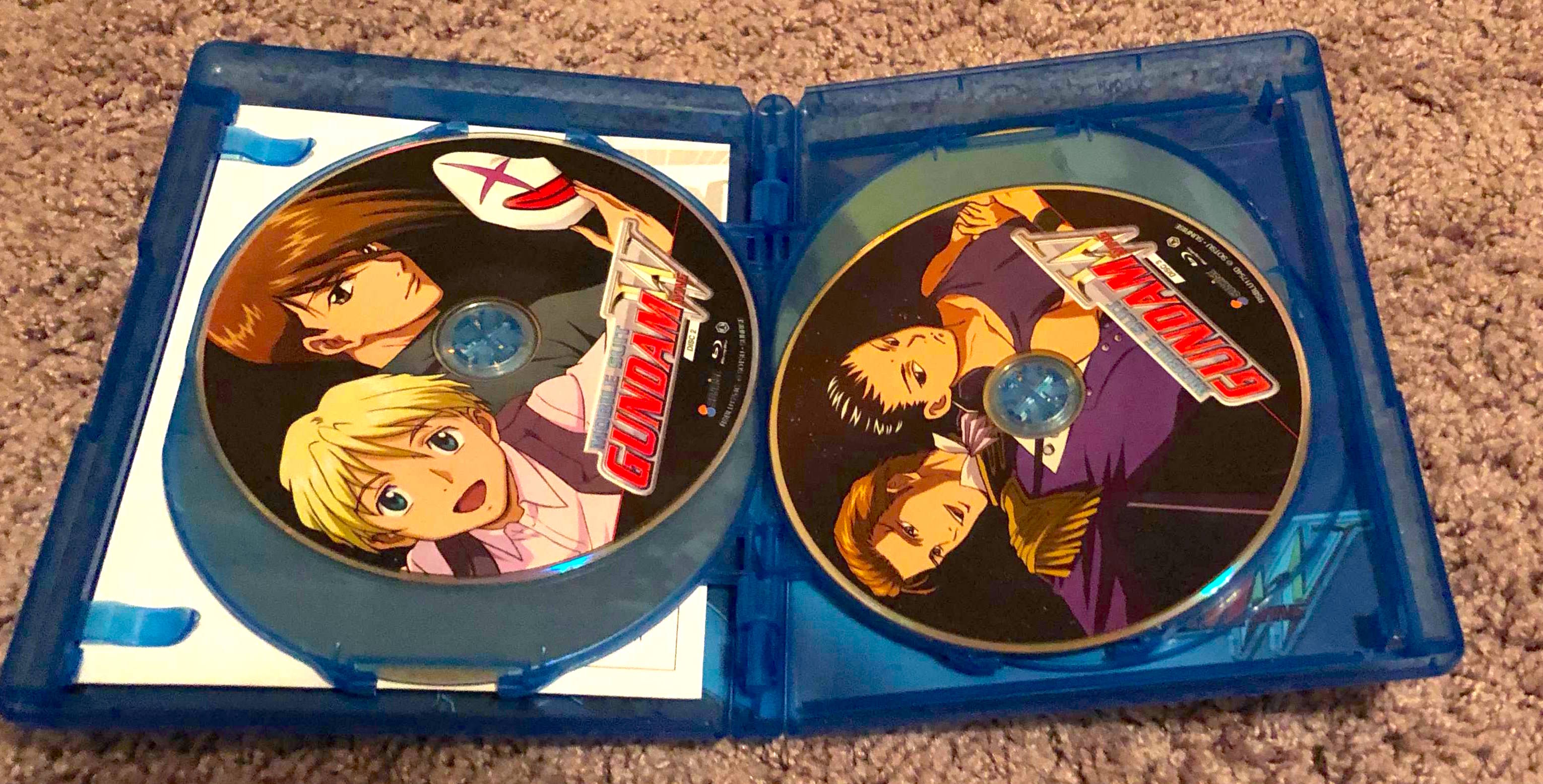
In addition to the three sets that are sold separately (series part 1, series part 2, Endless Waltz/Operation Meteor set), the box set includes a fourth disc exclusive to this box set. This disc includes interviews and anime panel footage with original Japanese crew from the series, the Frozen Teardrop picture drama, and the English dub closing credits, as seen during the Toonami airings of the show. The dub closing credits are a nice bonus, as they include a rare alternate instrumental version of the “Just Communication” theme music, and the interviews are an interesting way to get inside the minds of the creators of the series. The Frozen Teardrop picture drama is a nice idea for an extra, but it is basically just still photographs with a verbally-told story that is difficult to follow, so it ends up as a disappointment.
If you are thinking about buying the box, you understandably are curious about the other physical extras included here. The real highlight here is the book, hardcover and nearly 200 pages in length, featuring a compilation of artwork from the series, as well as cast interviews. There are a handful of other items included as well; you can see these in the following photos:
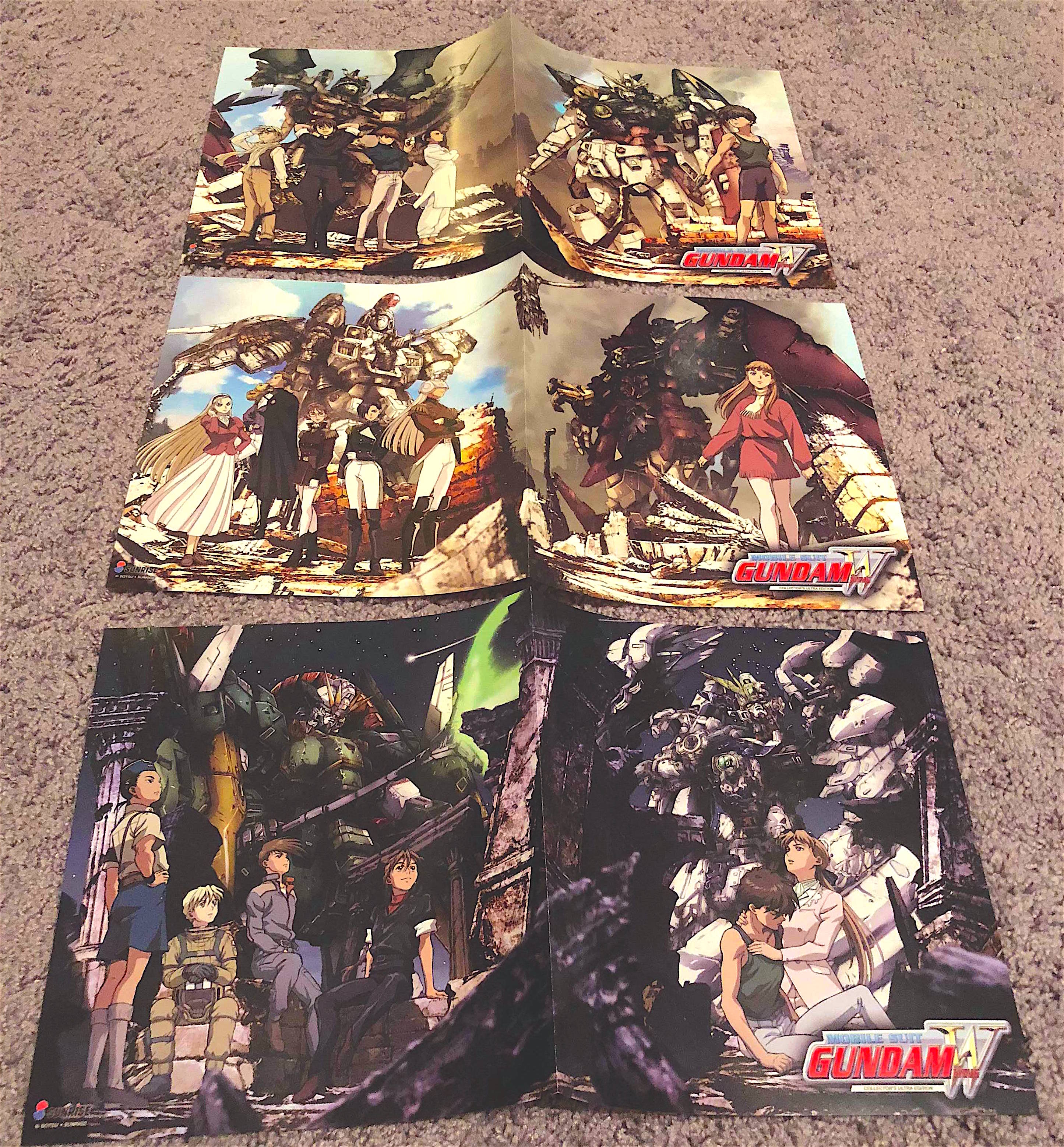
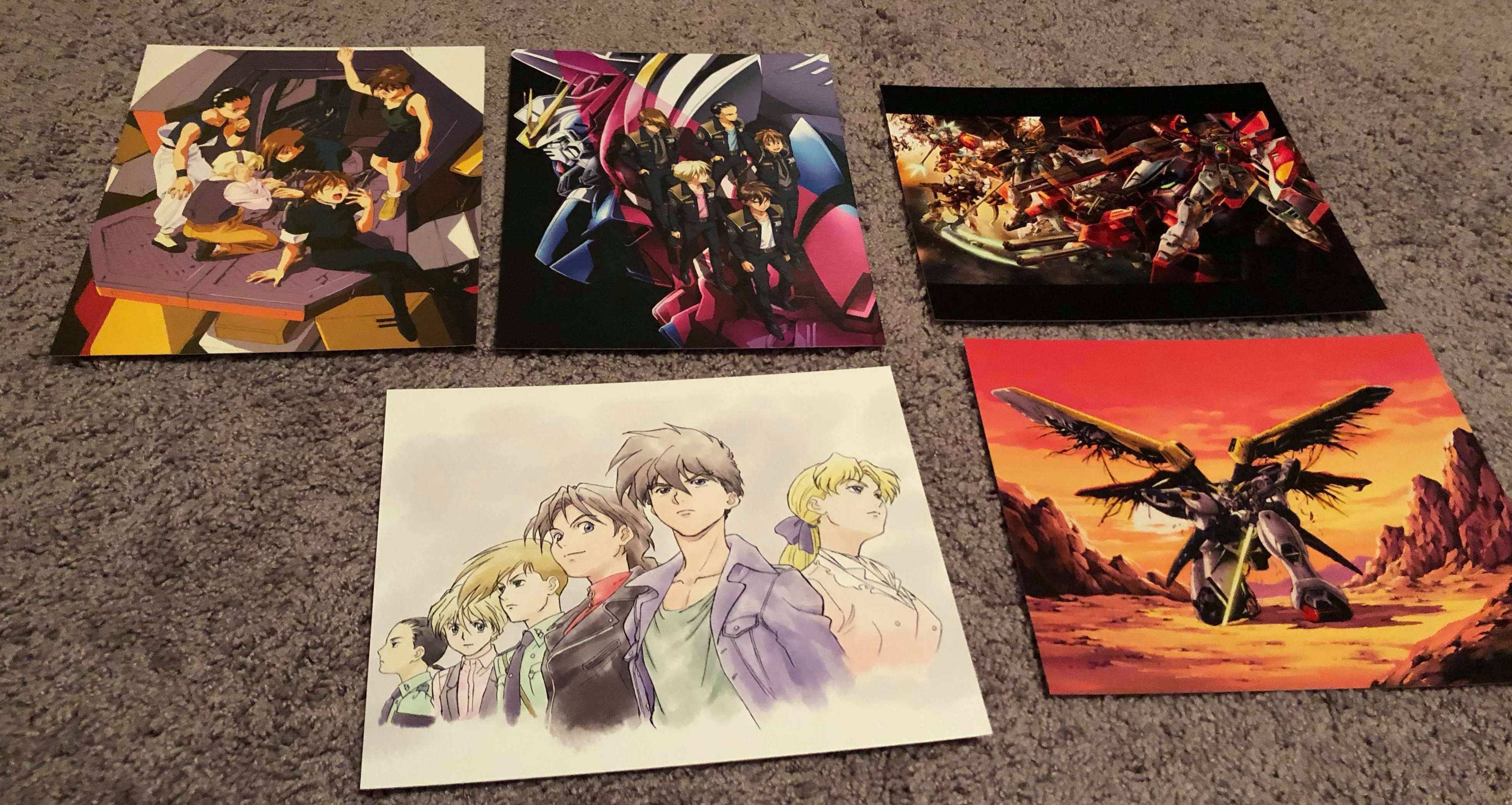
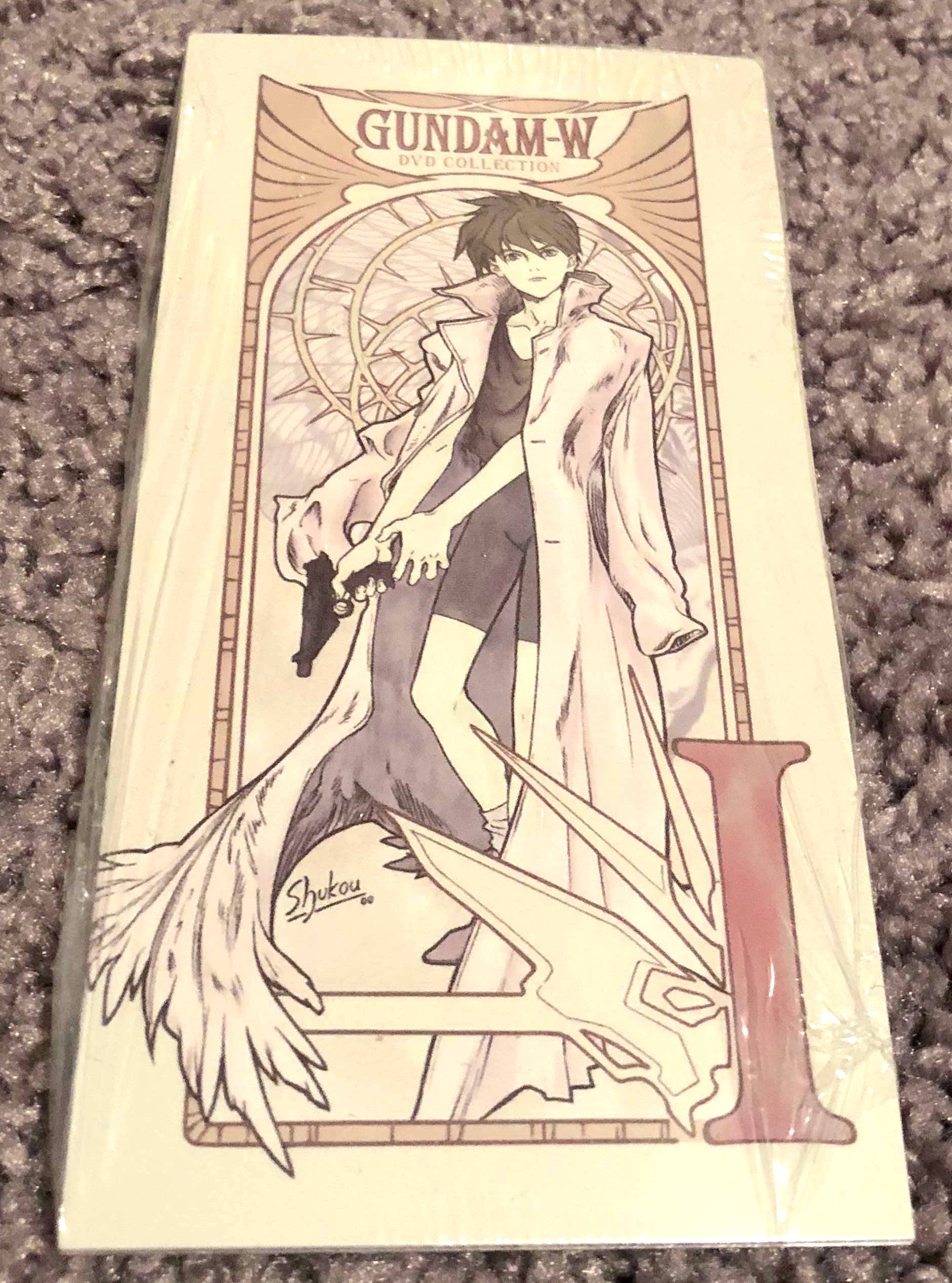
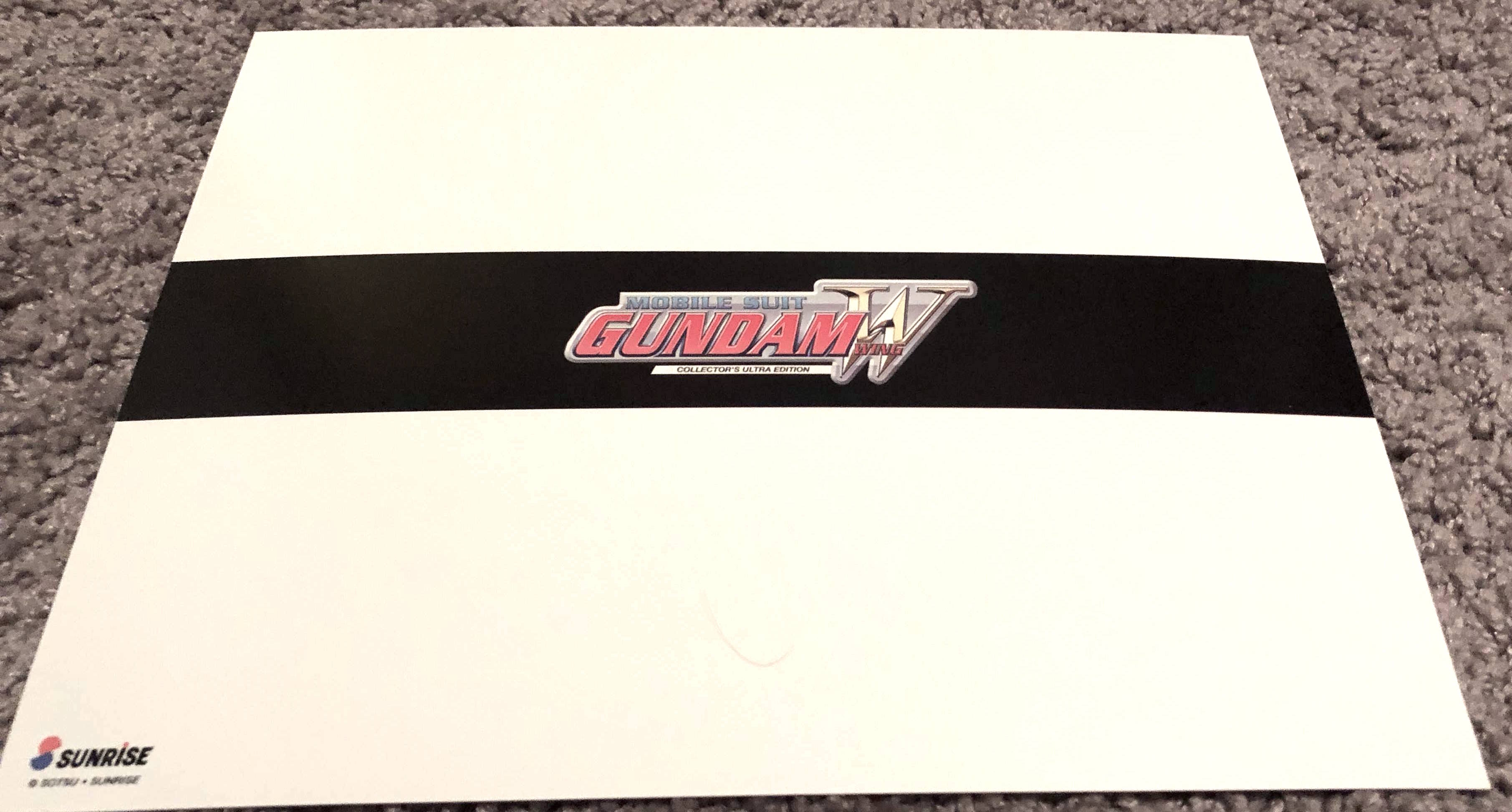
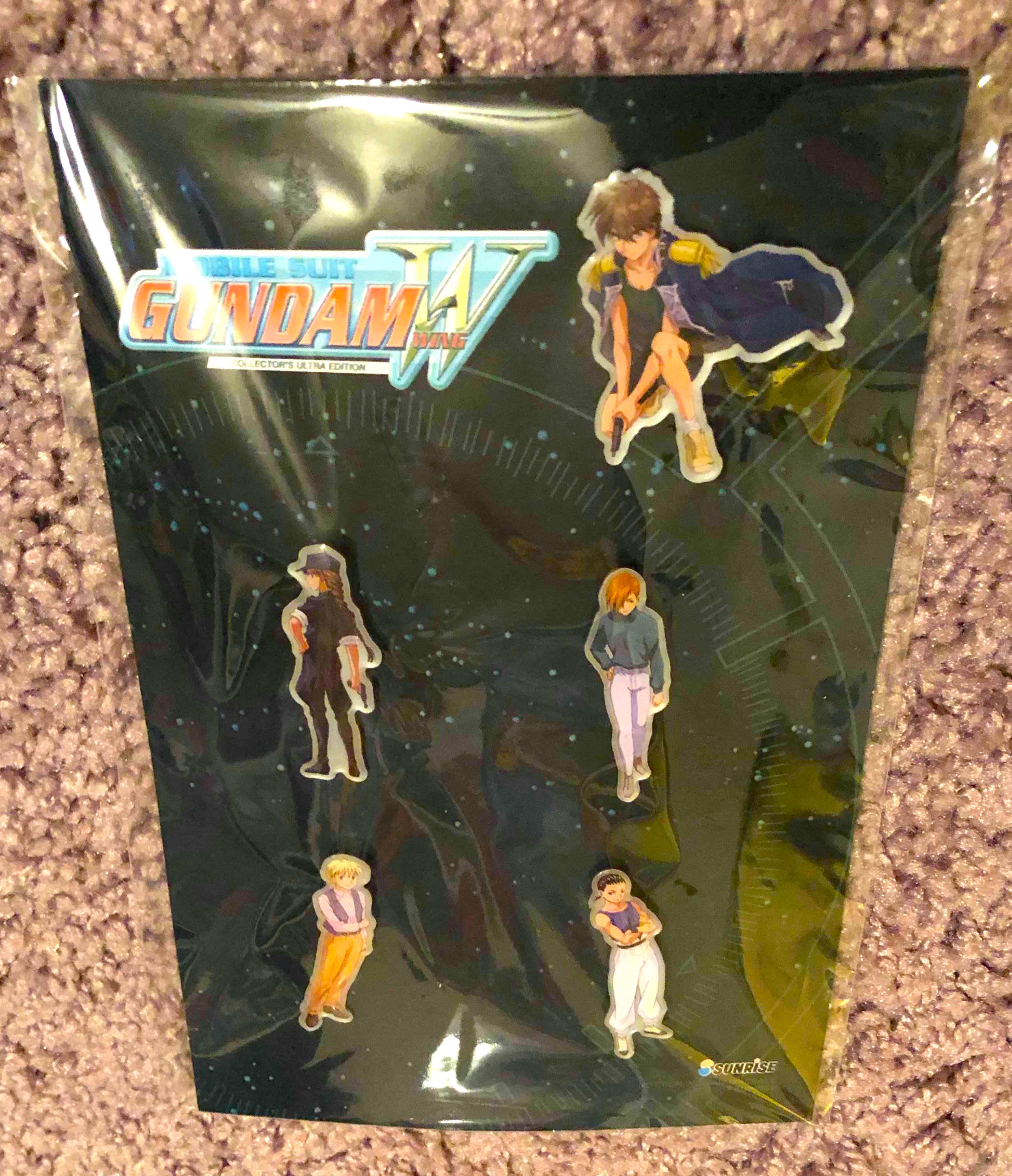
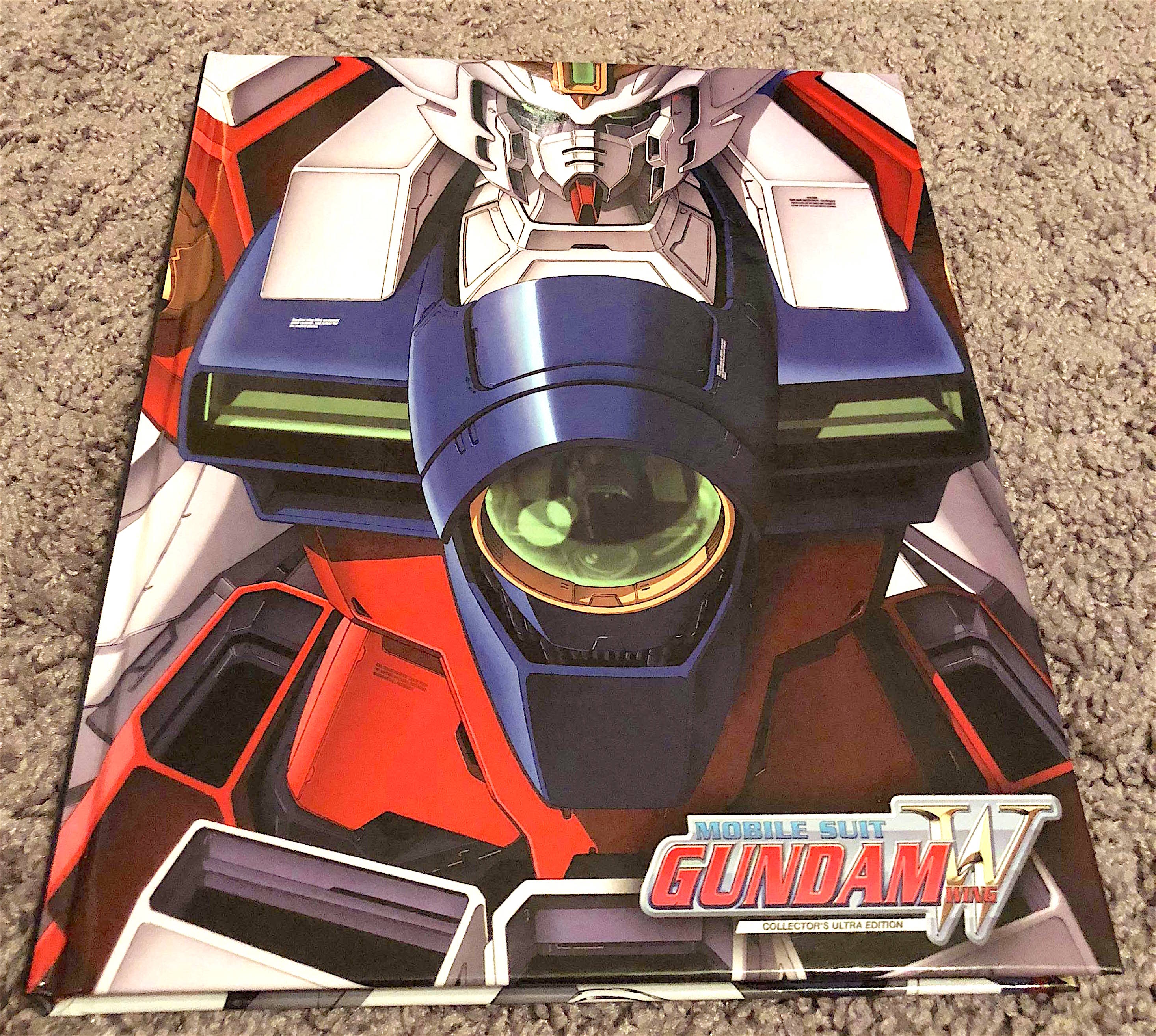
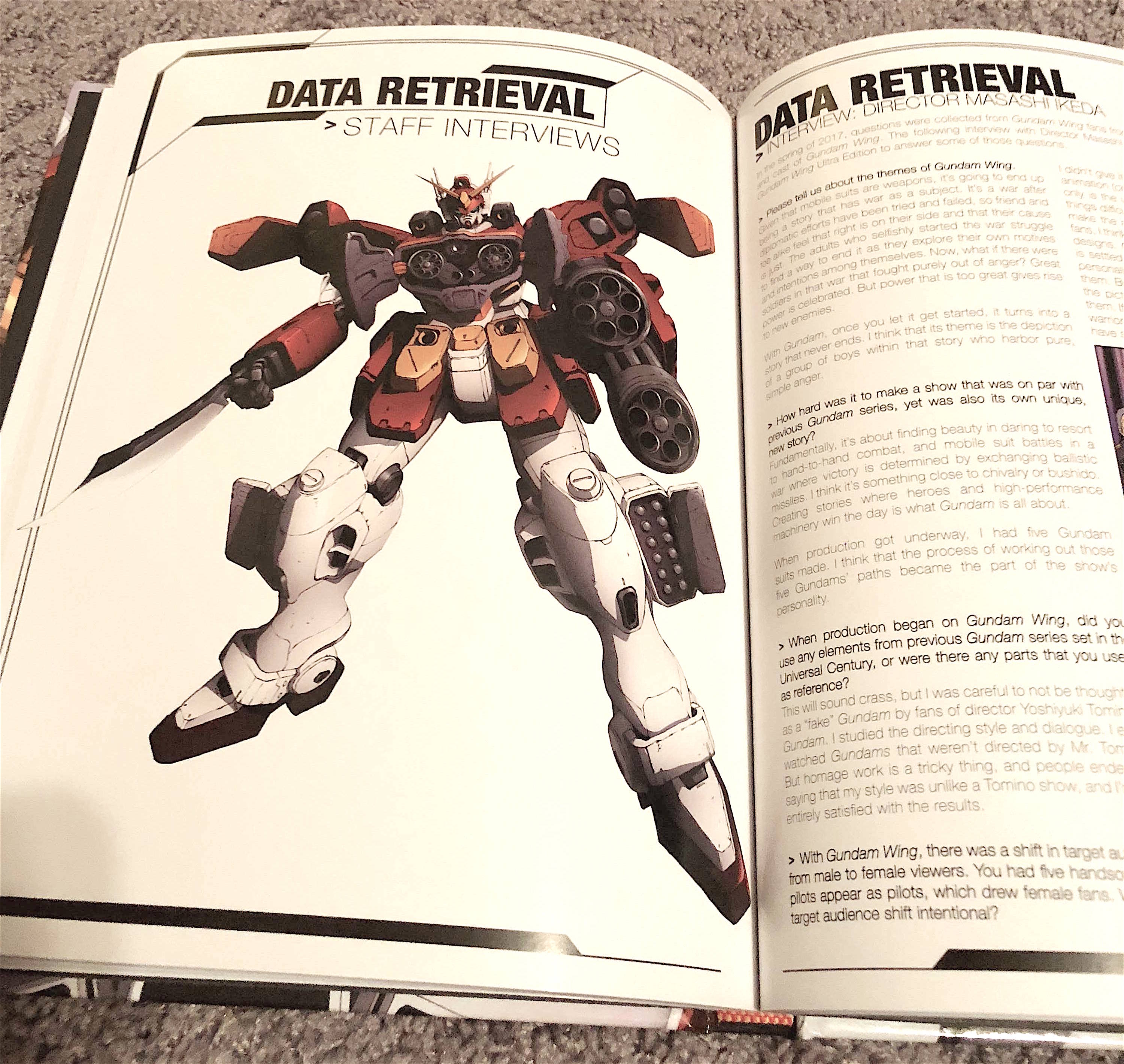
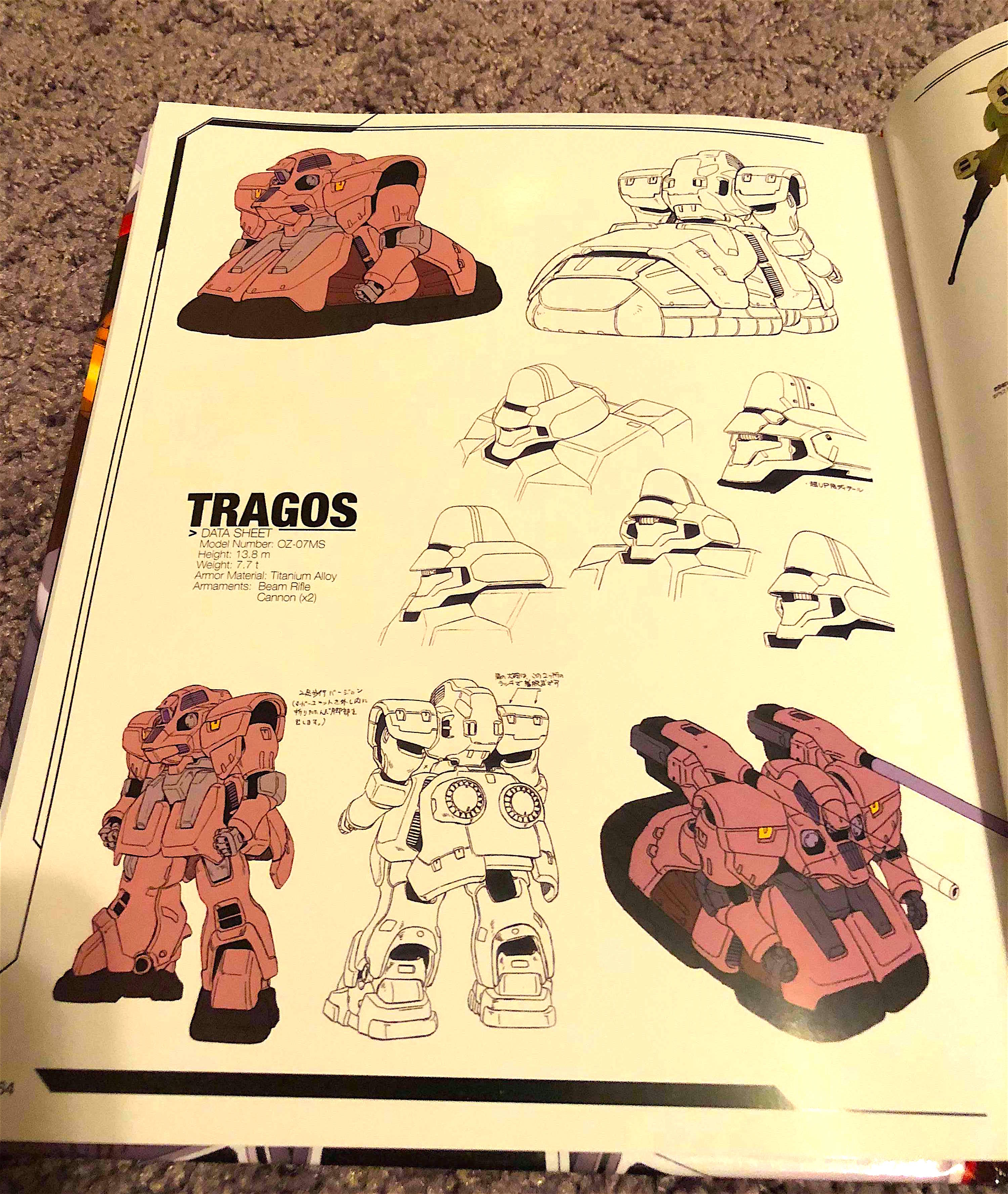
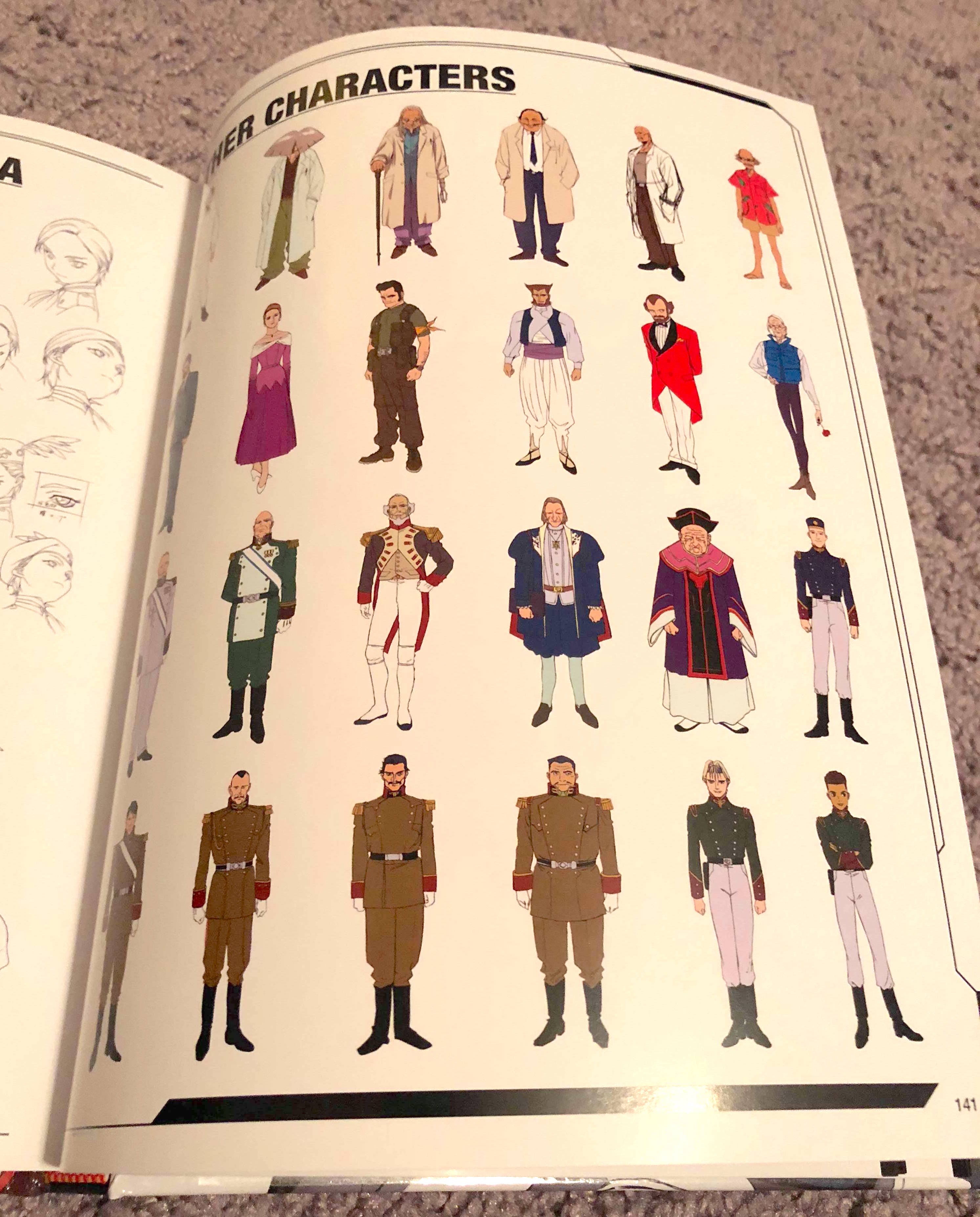
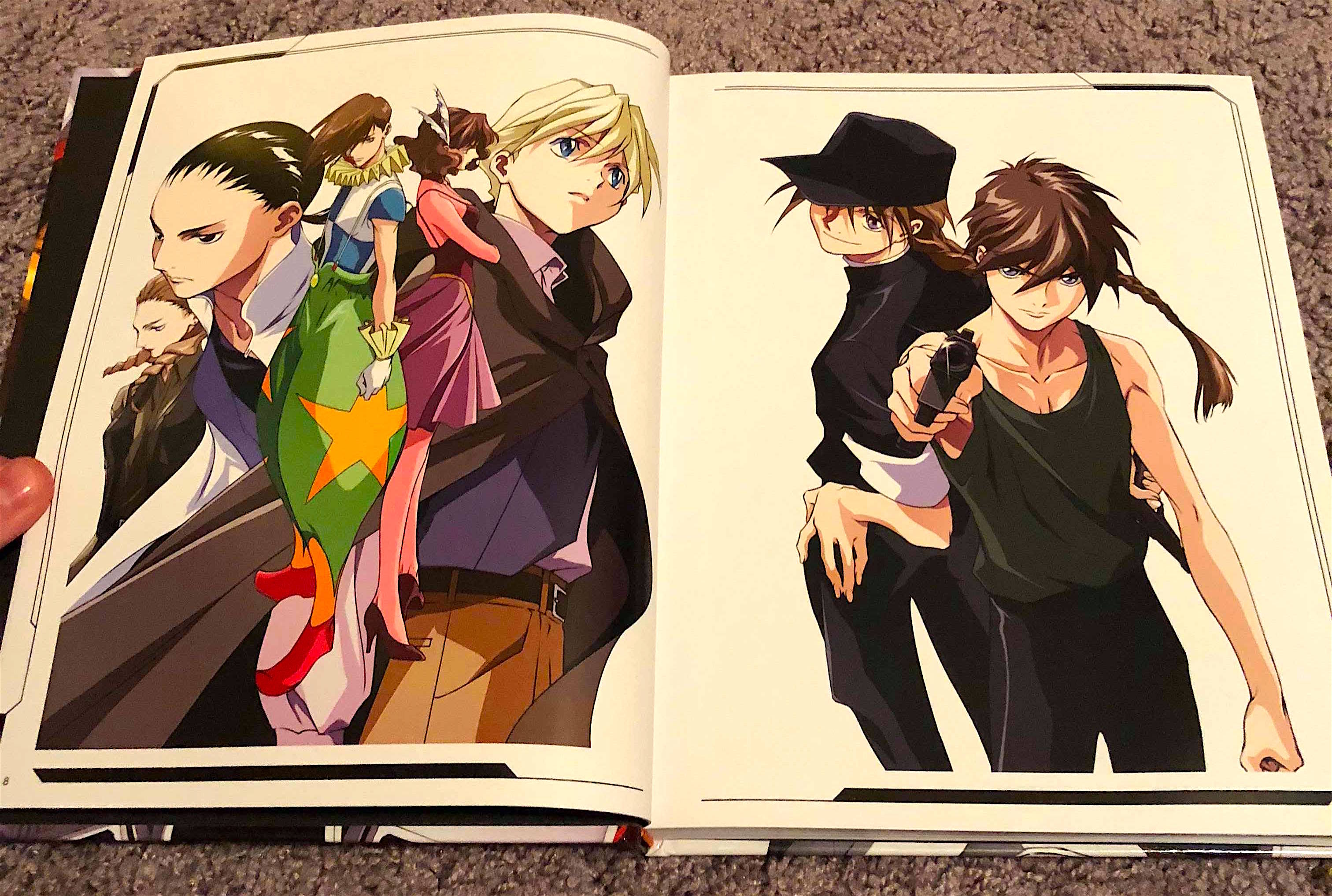
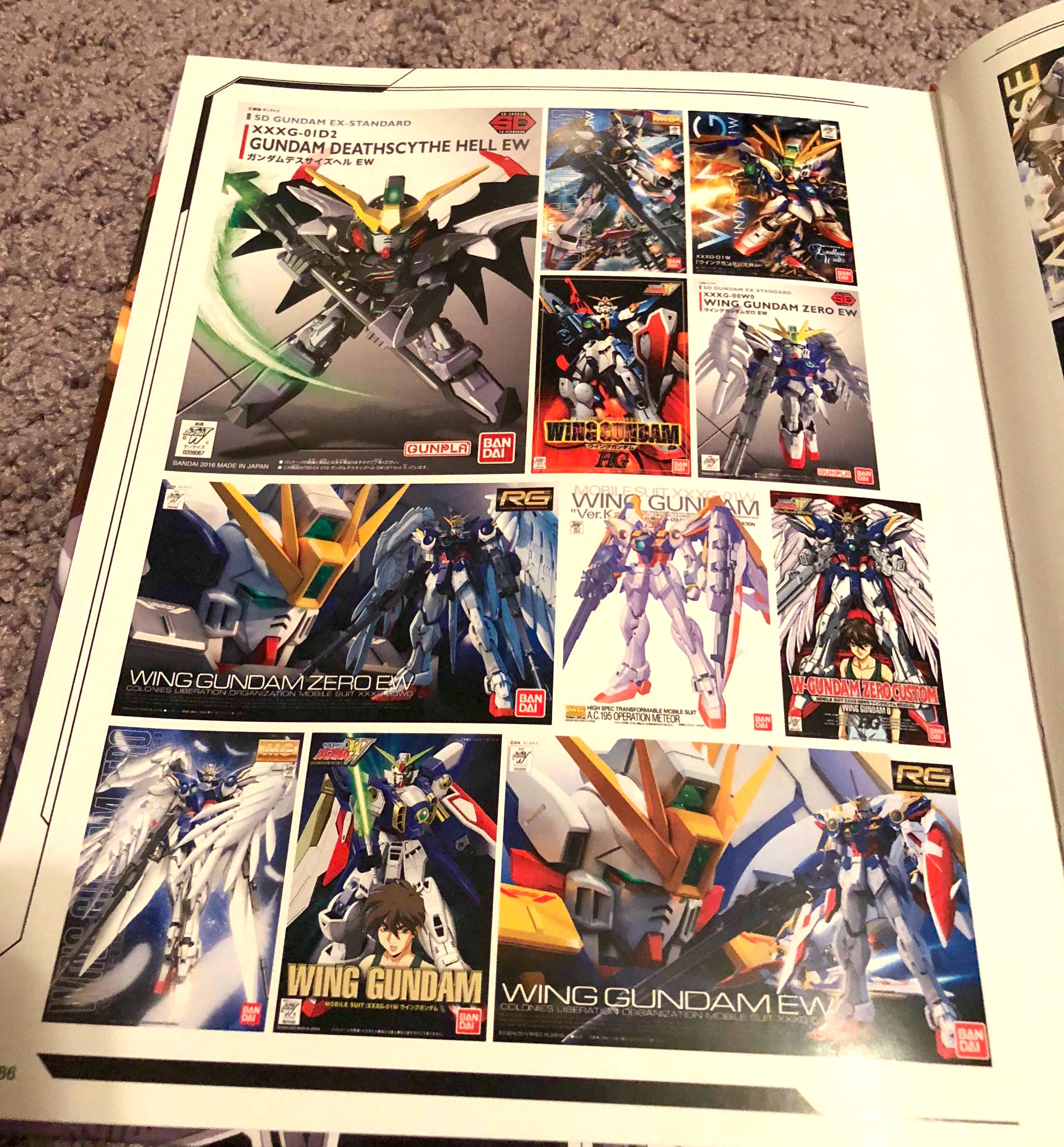
There are other forms of Gundam Wing media that should have been included in the set, including the Episode Zero manga, the G-Unit manga, and the proper Frozen Teardrop novels. I can understand not being able to include all of this material here; there may not even be proper English translations for most of it. Though it does make you wish the creators of this set could have gone the one step extra and given us the definitive Gundam Wing set.
The question you are probably still wanting answered is, “Should I buy this set?”
You should most definitely own Gundam Wing on Blu-ray Disc, but in the time since its release, this box set has gone up in price. I pre-ordered mine on Amazon.com prior to release, and due to their low price guarantee, got it for only around $130. But the set is currently priced at $270 on Amazon, and while the extra features and collector items included are definitely appealing, I cannot say that the package justifies this cost. If the price ever drops back into the $150 range (which is unlikely), I recommend picking it up. But unless you are a die-hard fan who must own all things Gundam, do not purchase this box at its current price, and opt for the individual releases of series part 1, series part 2, and the Endless Waltz/Operation Meteor set.
Gundam Wing has arrived on Blu-ray, but due to its price, this box set is really for the most die-hard of fans only. More casual fans should just buy the individual Blu-rays; you can own the whole series plus Endless Waltz for not much more than $100, which is still a far better deal than some studios are charging for anime. In either event, this is the ideal time to rediscover this classic series, or discover it for the first time!
DISCLAIMER: All artwork is the property of the respective copyright holders, including (but not limited to) Nozomi Entertainment and Sunrise. All photographs of the box set and its contents are by the author of this review.

